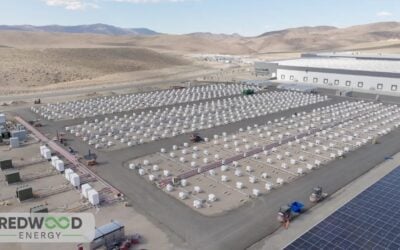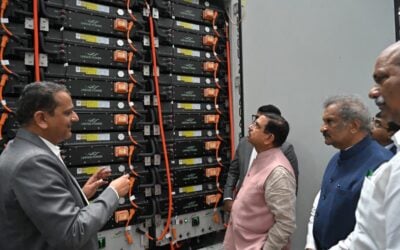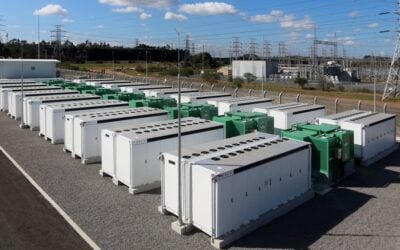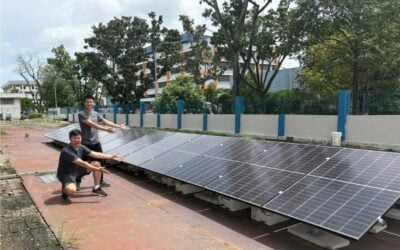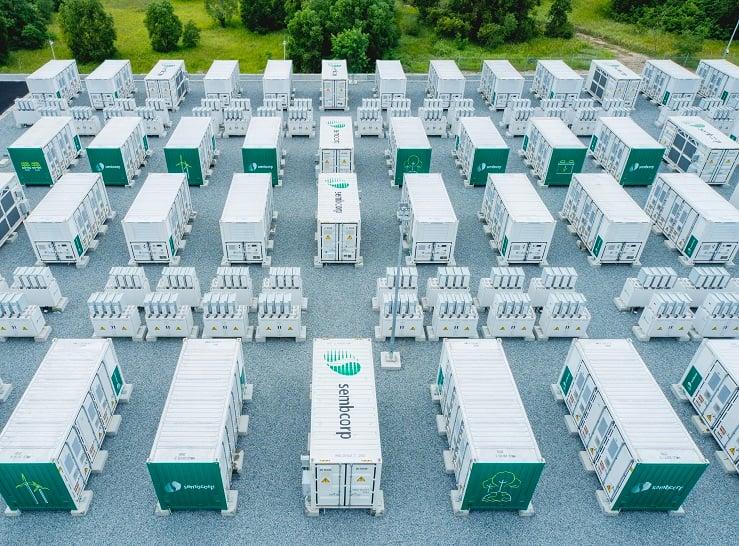
Singapore’s government and Energy Market Authority (EMA) have announced power sector and grid enhancements, including a possible expansion of Southeast Asia’s biggest battery storage plant.
In a speech at the Singapore International Energy Week trade event on Monday (21 October), Gan Kim Yong, the city-state’s deputy prime minister and minister for trade and industry, affirmed a commitment to peaking Singapore’s emissions by 2030 and achieving carbon neutrality by 2050.
Enjoy 12 months of exclusive analysis
- Regular insight and analysis of the industry’s biggest developments
- In-depth interviews with the industry’s leading figures
- Annual digital subscription to the PV Tech Power journal
- Discounts on Solar Media’s portfolio of events, in-person and virtual
“This will not be easy, given our limited land surface for solar deployment and the lack of wind or hydro-electric power,” the minister said.
The proposed solutions include enabling more energy imports from abroad, and relying on a broad range of technologies within Singapore’s borders, as well as upgrading the grid and speeding up connection times for new energy projects.
Nonetheless, solar PV is the “most viable source of renewable energy domestically,” Gan Kim Yong said, and of a targeted 2GWp of solar capacity by 2030, Singapore is at 1.35GWp today, a big jump from just 260MWp at the time the target was set in 2019.
However, the minister said there is a need to “step up energy storage systems to manage solar intermittency.”
Expansion of 200MW BESS, BTM participation in demand response
Talks are currently ongoing with Sembcorp, the engineering conglomerate behind the 200MW/285MWh battery energy storage system (BESS) installation on Singapore’s Jurong Island.
Officially inaugurated in early 2023 on the island which houses much of Singapore’s industrial and energy infrastructure, the BESS project is the biggest of its kind in Southeast Asia.
It was developed by Sembcorp in collaboration with the Singapore Energy Market Authority (EMA) after winning an EMA contract through a solicitation. With that one project, Singapore its 200MWh by 2025 energy storage target and minister Gan Kim Yong said it helps to “counteract sharp and unexpected drops in solar energy.”
“EMA and Sembcorp are in discussions to expand the system and increase the land use density in tandem,” Yong said.
Along with discussion of Singapore’s plans to import 6GW of low-carbon energy by 2035—so far 2GW of conditional licenses have been granted including AAPowerLink from Australia—and mention of other areas such as alternative fuels, natural gas for balancing the network and upgrading the grid, Gan Kim Yong said behind-the-meter (BTM) battery storage systems will be allowed to participate in demand response through an EMA programme for the first time.
The DR programme incentivises customers to reduce their draw of power from the grid during peak times. In addition to battery storage, it will be opened up to electric vehicle (EV) charger infrastructure, the minister said.
Regulatory sandbox for virtual power plants
In a separate announcement also made on Monday, the Energy Market Authority discussed initiatives to enable greater uptake of distributed energy resources (DERs), including rooftop PV, behind-the-meter batteries, and smart EV chargers, on the Singapore grid.
A Future Grid Capabilities Roadmap is currently being written in partnership with state-owned electricity and gas distribution company SP Group, the EMA said. This will identify and explore options such as the use of DERs for energy, ancillary services, and demand response and distributed energy resource management systems (DERMS).
The EMA is also establishing a ‘regulatory sandbox’ for virtual power plants (VPPs). VPPs enable the aggregation of DERs to provide a single source of energy, ancillary services and demand response to the grid.
Industry proposals for the sandbox are being sought, with the EMA accepting submissions until 31 December 2024. At the same time, the authority has signed a Memorandum of Understanding (MoU) with SP Group to deploy a 15MW VPP initially comprising solar PV and battery storage. It would participate in the electricity market and explore how VPPs can make the biggest overall contribution to decarbonisation and modernising the grid.
40MWh flow battery expansion
Plans to also expand a vanadium redox flow battery (VRFB) installation on Jurong Island were announced on Tuesday (22 October) by flow battery manufacturer VFlowTech and its materials and engineering partner Advario.
The pair were awarded EMA grant funding following a 2021 request for proposals (RFP) to create a test bed on the island for innovative energy technologies. The pair were among three selected from more than 30 submissions and deployed a VRFB system.
The VRFB was installed with repurposed steel tanks serving as its electrolyte tanks and, according to an EMA announcement following the award, could be expanded significantly by scaling up the tanks. The electrolyte used could be made from repurposing Jurong Island industrial waste, the EMA said.
VFlowTech— spun out of Singapore’s Nanyang Technical University and claimed to be Southeast Asia’s only flow battery company—partnered with global liquid logistics group Advario in 2022. That came shortly before the closing of a US$10 million Series A funding round aimed at enabling VFlowTech to set up manufacturing lines and develop its products.
The pair said this week that they have signed an MoU with JTC, a Singapore government corporation which oversees industrial land use, to scale up the existing VRFB system on Jurong to around 40MWh capacity from just over 1.5MWh today.
“Battery energy storage systems, especially long-duration solutions such as flow batteries, play an important role in ensuring the stability and resilience of our power grid,” EMA assistant chief executive for markets and systems Low Xin Wei said of the MoU.
“Jurong Island, with its varied industrial loads and planned renewable resources is a prime candidate to testbed smart grid operations and energy management. We welcome Advario’s and VFlowTech’s interest to scale up their battery energy storage system.”


